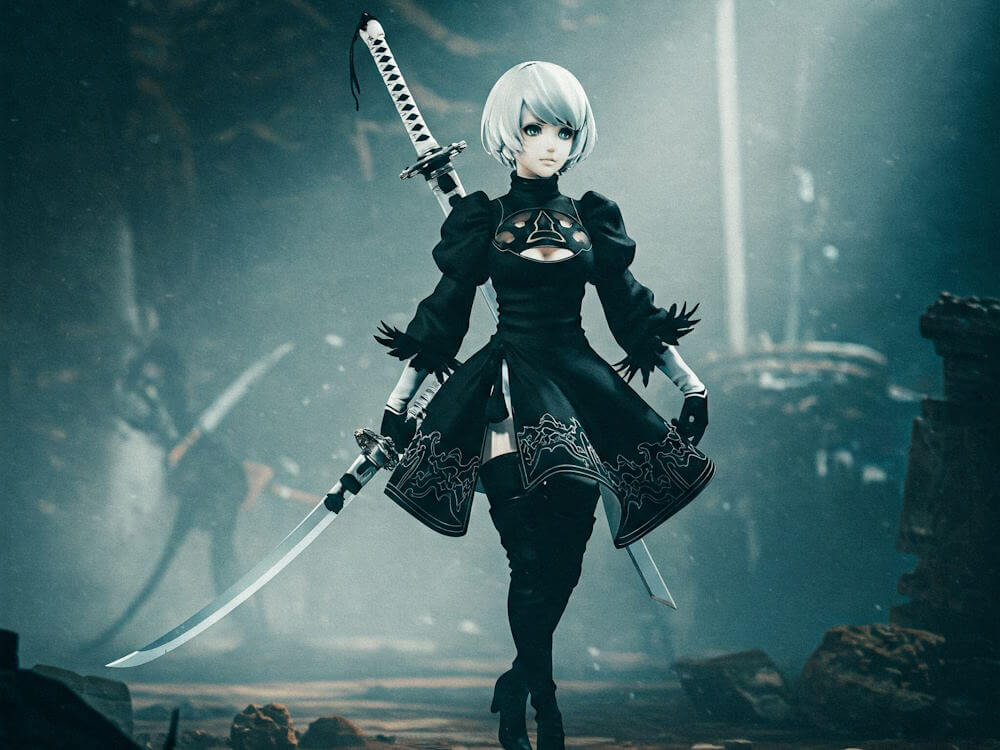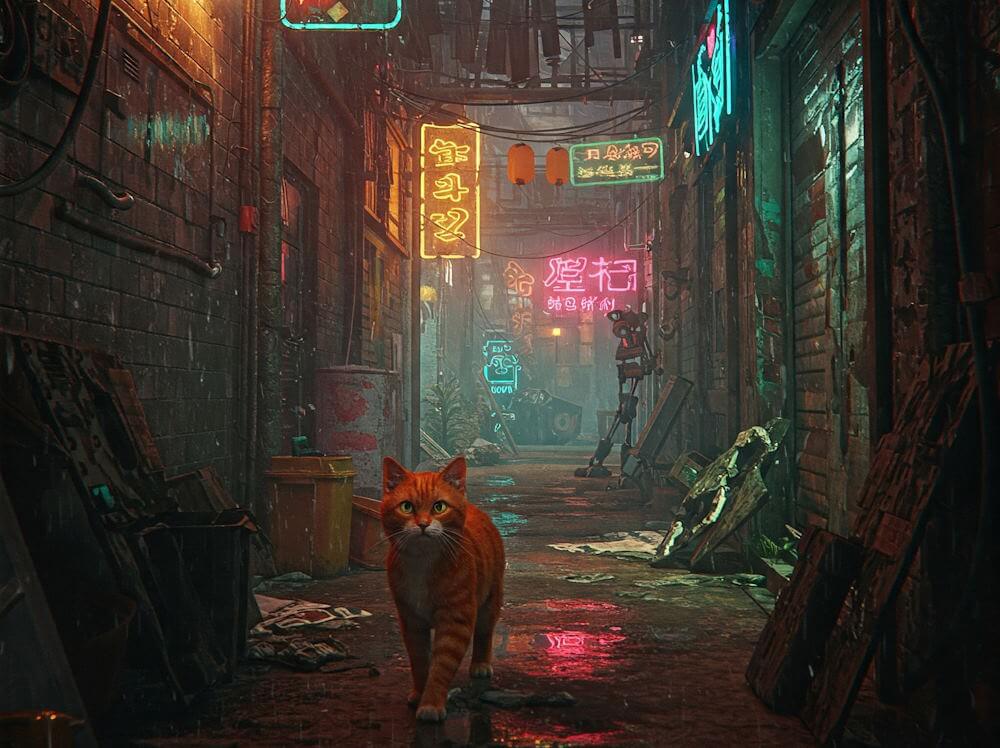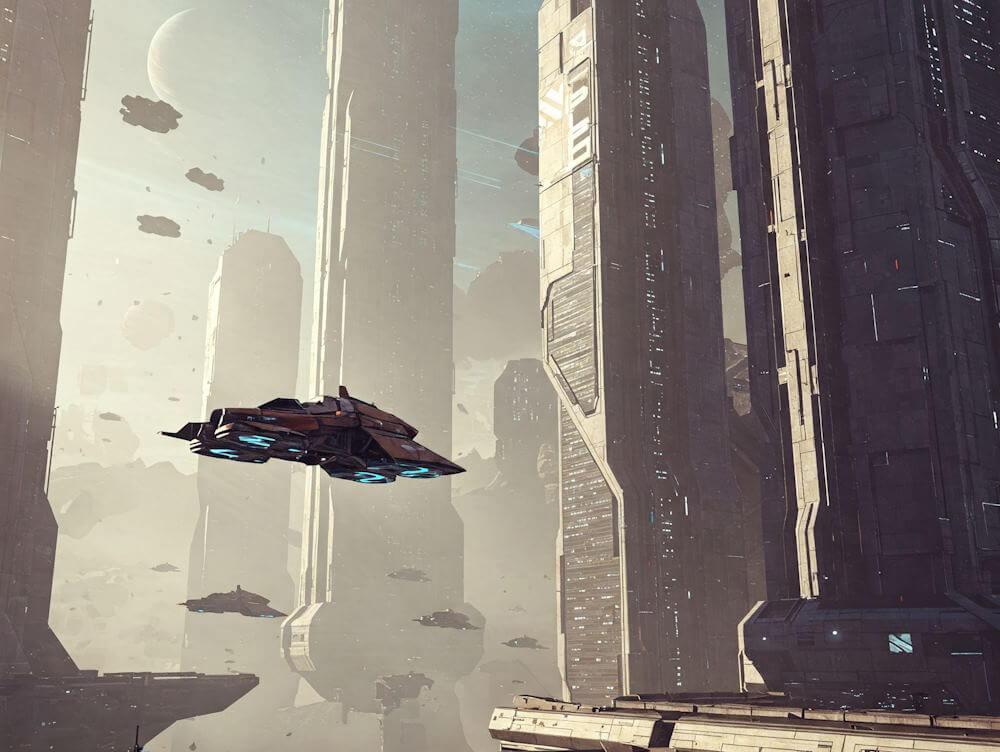Nier: Automata, developed by PlatinumGames and published by Square Enix, was released on March 7, 2017. This action role-playing game serves as a sequel to the 2010 title, Nier, which itself is part of the Drakengard franchise. Directed by Yoko Taro, Nier: Automata quickly garnered attention for its unique blend of gameplay mechanics, compelling narrative, and philosophical themes. Upon its release, the game received widespread acclaim from both players and critics, praising its striking visuals, intricate storytelling, and thought-provoking commentary on the human condition.
Set in a post-apocalyptic world where androids fight against alien machines, Nier: Automata explores complex themes of existentialism, identity, and the nature of consciousness. The gameplay seamlessly intertwines fast-paced combat with deep narrative exploration, offering players an engaging experience that persists long after the credits roll. Critics laud the title for its ability to elevate gaming as an art form, using interactive storytelling to delve into the psyche of its characters and the overall world.
In the years following its release, Nier: Automata has established itself as a seminal work within the gaming landscape. Its impact on video game culture is highlighted by numerous awards and accolades, along with a dedicated fan base that continues to explore its themes and messages. As a piece of art, the game transcends traditional gaming tropes, providing players with an experience that prompts reflection and discussion, making it a significant milestone in the evolution of narrative-driven games.
Narrative Depth and Complexity
The narrative structure of Nier: Automata is widely regarded as one of the most ambitious in contemporary gaming, offering players a multilayered story that transcends traditional video game storytelling. Central to the game’s exploration is a rich tapestry of themes, including existentialism, identity, and the human condition. Through its characters and plot, Nier: Automata prompts players to confront fundamental questions about purpose and the essence of being, elevating the narrative beyond mere entertainment.
One of the most compelling aspects of Nier: Automata is its use of multiple perspectives to convey its message. Each character represents different facets of the game’s overarching themes, enabling players to experience the narrative through a variety of lenses. This approach not only enriches the plot but also challenges players to contemplate the moral and philosophical implications of their choices. The intertwining fates of androids and humans illuminate the complexities of identity, prompting players to examine what it means to be “alive.”
The game’s narrative complexity is further enhanced by its nonlinear storytelling. Players encounter various endings, which branch from the choices they make throughout their journey. This structure invites deeper engagement, as players are encouraged to revisit earlier decisions to unlock alternate paths and outcomes. Each conclusion sheds new light on character motivations and the broader philosophical questions posed by the game, creating an immersive experience that rewards exploration and engagement.
Additionally, Nier: Automata’s ability to seamlessly blend gameplay with narrative ensures that the story feels integral to player experience. The artistic choices made in storytelling, such as evoking emotional responses through characterization and environmental storytelling, contribute to a profound understanding of the themes. In doing so, Nier: Automata not only tells a story, but it also engages players in a dialogue about existence itself, solidifying its place as an artistic triumph in gaming.
Visual and Aesthetic Mastery
Nier: Automata stands out not only for its complex narrative but also for its breathtaking visual and aesthetic design. The character designs are meticulously crafted, featuring a blend of humanoid androids and intricate machinery that evoke a sense of both beauty and melancholy. Each character, especially the protagonists 2B and 9S, showcases a distinct visual identity that reflects their intricate personalities and emotional arcs. Their designs serve not only to captivate players but also to deepen the emotional resonance of the story, enhancing the player’s connection to the narrative.
The environments in Nier: Automata are equally noteworthy, ranging from sprawling landscapes of a post-apocalyptic Earth to meticulously constructed urban areas. The artistry behind each setting is a critical component of the game’s visual narrative. Aesthetic choices, such as the contrast between the natural world reclaiming ruins of civilization and the stark industrial structures, contribute to the thematic exploration of existence and conflict between humanity and machines. The art direction employs a unique palette that balances vibrant colors with desaturated tones, creating a striking visual juxtaposition that elicits an emotional response within the player.
The incorporation of varying art styles throughout the gameplay, from the smooth 2D side-scrolling segments to the 3D open-world exploration, serves to further immerse players in this intricate universe. This dynamic aesthetic approach enhances the gameplay experience, inviting players to engage with the narrative on both an emotional and intellectual level. The visual mastery evident in Nier: Automata not only enriches its storytelling but also establishes it as a landmark in the gaming industry, where art and emotion intersect seamlessly.
Innovative Game Mechanics
Nier: Automata stands out in the gaming landscape due to its innovative game mechanics, which are intricately designed to enhance player experience while conveying complex themes. One significant aspect is its blend of genres, seamlessly integrating elements of action role-playing, hack-and-slash combat, and shoot ’em up gameplay. This fusion not only keeps gameplay engaging but also mirrors the narrative’s exploration of identity and existence, as players navigate varied gameplay styles that reflect the uncertainties faced by the characters.
The combat system in Nier: Automata has been meticulously crafted to offer both depth and accessibility. Players can switch between different weapons and fighting styles, enabling a dynamic combat experience tailored to individual preferences. This flexibility encourages players to experiment with different strategies and approaches, reinforcing the theme of free will present throughout the game. As players adapt their fighting style to the challenges they encounter, they engage more deeply with the unfolding narrative, emphasizing the concept of agency in a world where choices have profound implications.
Moreover, the reliance on player choice significantly enhances the overall experience in Nier: Automata. Players frequently face moral dilemmas that impact the game’s outcome, adding layers of complexity to the storytelling. The choices made by players are not merely for aesthetic purposes; they resonate with the game’s core themes of autonomy and the consequences of one’s actions. This interplay between gameplay mechanics and narrative structure fosters a unique form of artistic expression, where players are challenged to reflect on the nature of choice and its ramifications. Ultimately, Nier: Automata’s innovative design encapsulates a holistic gaming experience that transcends entertainment, inviting players to engage thoughtfully with its artistic and philosophical undertones.
Soundtrack and Audio Design
The soundtrack of Nier: Automata, masterfully composed by Keiichi Okabe, plays a pivotal role in establishing the game’s atmospheric depth and emotional resonance. The music is not merely a backdrop but an integral element that enhances the narrative and visual aesthetics of the game. Each track is meticulously crafted to evoke a range of emotions that align perfectly with the unfolding story and the characters’ journeys.
For instance, the haunting melody of “Weight of the World” creates a profound sense of nostalgia and melancholy, resonating deeply with players as they traverse through the remnants of a devastated world. This particular track encapsulates the game’s core themes of loss, hope, and the struggle for identity, reinforcing the connection between the players and the narrative. The use of vocals within this piece adds an ethereal quality, making moments in the game feel even more poignant.
In addition to the thematic relevance, the sound design complements the visual artistry. The immersive audio landscape, featuring ambient sounds and subtle effects, draws players into the environment. For example, the intricate layering of sounds during battle sequences not only enhances the tension but also supports the fluid animation, creating a convincing and cohesive experience. Tracks like “Bipolar Nightmare” exemplify this synergy, with dynamic shifts in rhythm and orchestration that mirror the high-stakes gameplay.
The overall audio experience in Nier: Automata is marked by its atmospheric versatility. From serene moments of exploration characterized by soft piano melodies to the adrenaline-pumping orchestral score during confrontations, each audio element serves a purpose. The music and sound design together craft a holistic artistic experience, elevating the game from mere entertainment to a rich, emotional journey.
Philosophical and Ethical Undertones
Nier: Automata is not only a visually stunning game but also a thought-provoking exploration of philosophical and ethical dilemmas that resonate deeply with contemporary societal issues. Throughout the narrative, players are confronted with a myriad of questions surrounding artificial intelligence, consciousness, and the moral implications of their choices. These themes are intricately woven into the gameplay, prompting players to reflect on their own humanity as they engage with the robotic characters who possess complex emotional and cognitive abilities.
The game invites players to consider the nature of consciousness and what it means to be “alive.” Are beings who exhibit sentience, regardless of their physical form, entitled to the same considerations as humans? Nier: Automata addresses this issue through its nuanced portrayal of androids. The game challenges the notion of otherness by establishing deep emotional connections between players and these artificial beings, ultimately urging them to empathize with the struggles faced by the characters. This exploration raises pertinent questions about the ethics of artificial intelligence, including the responsibilities that creators hold towards their creations and the potential consequences of their decisions.
Moreover, Nier: Automata delves into the moral ambiguities that accompany conflict. As players navigate the game’s world, they are often placed in situations where there is no clear right or wrong choice. The characters’ dilemmas echo real-world ethical debates, such as the justifications for war and the sacrifice of individual lives for a perceived greater good. By engaging with these complex themes, players are compelled to examine their values and the implications of their actions, both within the game and in the real world. This profound layer of commentary elevates Nier: Automata beyond mere entertainment, establishing it as a remarkable piece of art that encourages a deeper understanding of the human experience.
Influence on Gaming and Popular Culture
Nier: Automata has undeniably left a profound mark on the gaming industry and popular culture since its release. The game has garnered critical acclaim not only for its intricate narrative and philosophical themes but also for its innovative gameplay mechanics and artistic aesthetics. As a result, it has inspired a new generation of game developers who seek to incorporate similar narrative depth and emotional engagement in their titles. The unique blending of gameplay with storytelling has reinforced the idea that video games can be a medium for profound artistic expression.
The influence of Nier: Automata extends beyond just quantitative measures of success, such as sales and reviews. Many independent game developers have drawn inspiration from its themes, pushing boundaries in the realm of interactive storytelling. For instance, the game’s exploration of existentialism and the human condition has led to a surge in titles that tackle heavy topics through engaging gameplay, showcasing the potential for games to comment on social and philosophical issues. Additionally, its compelling characters and multiple endings have motivated developers to experiment with non-linear storytelling techniques, enabling players to experience a broader range of narratives.
The game’s impact on popular culture is also significant. It has inspired a devoted fanbase that actively engages through fan art, cosplay, and discussion forums. The iconic designs of the characters, particularly 2B, have permeated various facets of pop culture, appearing in merchandise and collaborations across different media. This widespread recognition has further solidified the status of video games as a legitimate art form. As cultural attitudes toward gaming continue to evolve, the success of Nier: Automata serves as a benchmark for future titles, showcasing the unique capacity of video games to convey complex messages and evoke deep emotional responses from players.
Community Reception and Critique
Nier: Automata has sparked an enthusiastic and lively response from its community, reflecting a multitude of interpretations and critiques that have underscored its artistic significance in the gaming industry. Players have engaged deeply with the game’s themes, from existentialism to the nature of consciousness, resulting in numerous discussions across various platforms. The community’s insights contribute to a broader understanding of the game, illustrating how it resonates on multiple levels with its audience.
One of the key aspects of fan engagement revolves around the thematic richness of Nier: Automata. Players have undertaken the task of dissecting its narrative structure, exploring the philosophical questions it raises regarding identity, purpose, and the human condition. These discussions often occur in online forums, where gamers share personal interpretations and relate their experiences, deeply enriching the discourse surrounding the game. The availability of alternate endings encourages exploration and invites players to reflect on their choices, further enhancing discussions within the community.
Critiques of the game often highlight its artistic achievements, particularly in storytelling and visual design. Gamers frequently commend its seamless blend of genres, intricate world-building, and the profound connections established between characters. The juxtaposition of action-oriented gameplay with thought-provoking narratives prompts players to consider the underlying messages more critically. While some critiques note gameplay flaws, these discussions generally conclude that the artistic elements compensate for any technical shortcomings, showcasing a commitment to narrative above all else.
The engagement of the community extends beyond mere criticism and appreciation. Fans have crafted fan art, music, and even cosplay inspired by the game, demonstrating their dedication and the emotional impact it has had on the gaming culture. This artistic expression emphasizes not only the game’s individual significance but also its ability to inspire a multitude of creative endeavors, solidifying Nier: Automata as a pivotal work within the gaming landscape.
Conclusion: The Legacy of Nier: Automata
The legacy of Nier: Automata is defined not only by its innovative gameplay mechanics but also by its profound narrative depth and artistic expression. Released in 2017, this title quickly established itself as a pivotal work within the gaming industry, serving as a benchmark for storytelling and design. The game’s combination of action, philosophical undertones, and emotional weight has resonated with players, creating a lasting impact that continues to influence new titles.
Nier: Automata’s exploration of existential themes, such as the nature of consciousness and the essence of humanity, elevates it beyond a mere entertainment experience. These philosophical inquiries invite players to engage on a deeper level, provoking thought and introspection. Such thematic richness is rare in video games and presents a unique perspective on how narratives can be constructed, challenging developers to rethink traditional storytelling elements.
Additionally, the game’s innovative approach to player engagement through multiple endings and narrative branches showcases a mastery of interactive storytelling. Nier: Automata successfully intertwines gameplay with narrative progression, ensuring that player decisions carry weight and consequence, which is a model that other titles can aspire to replicate. This dynamic interaction fosters investment in the storyline and characters, enhancing emotional stakes as players traverse its beautifully crafted world.
Moreover, the game’s artistic design, characterized by striking visuals and a hauntingly memorable soundtrack, reinforces its emotional tone. The visual and auditory elements work harmoniously to enhance the overall experience, marking a significant achievement in game design. As the industry continues to evolve, the techniques exhibited in Nier: Automata can serve as a guiding example for future developers seeking to create immersive, thought-provoking experiences.
In conclusion, Nier: Automata stands not just as a remarkable title, but as a pivotal artistic achievement that challenges the conventional boundaries of gaming. Its legacy is one of inspiration, urging future creators to innovate and enrich the gaming landscape with meaningful narratives and compelling designs.



